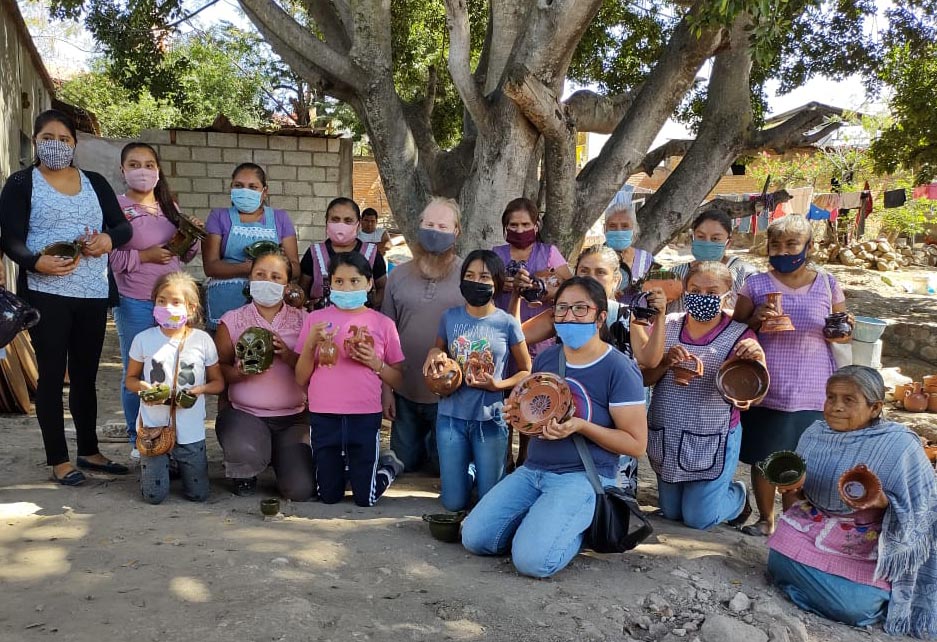Widespread low-level lead poisoning is one of Mexico’s most critical yet unknown public health concerns. Lead in traditional pottery glaze mixes with acidic foods–like coffee, chili peppers, tomatoes and lemons–-and quickly enters bodies’ digestive systems and bloodstreams.
What is the true scope of lead poisoning in Mexico? Pure Earth has been working with researchers in Mexico, including Dr. Martha María Téllez Rojo, a lead expert with INSP, for over a decade to call attention to the health impacts from lead-glazed pottery. For the first time, we have a clearer picture from a health survey conducted by the National Institute of Public Health (INSP) in Mexico, “National report of blood lead levels and use of glazed mud in vulnerable children.”
The results reveal that at least one million children between one and four years of age (representing 22% of the study population) have elevated blood lead levels above 5 μg/dL (Note: while there is no safe level of lead, the CDC recommends health intervention at levels of 5 μg/dL and above).
“It is important to realize that this figure will rise because this result covers ONLY children living in towns with less than 100,000 inhabitants. When data from other areas of the country are analyzed, the number of children confirmed with elevated blood lead levels will most certainly go beyond the one million mark,” says Daniel Estrada, head of Pure Earth Mexico and one of the co-authors of the report. Our estimates based on extrapolation from our site assessments and including children under 14, is 13 million with elevated blood lead levels.
MEXICO
13 million children under age 14 have elevated blood lead levels.

13M
With support of European Commission and HSBC, Pure Earth launched its Lead and Health Initiative in Mexico in three states. The multi-faceted strategy includes community education on health dangers and economic benefits of safer practices; training potters in using lead-free glaze, marketing and workplace remediation; building demand for lead-free pottery by engaging the hospitality industry; and enforcement of complementary regulations.
PARTNERS
Government Agencies
- COFEPRIS
- FONART
- INSP
- IMSS
Corporations
- HSBC
- Clarios Foundation
- Meridian Bioscience
- CANIRAC– the national restaurant association
One of the key finding is that the main source of lead poisoning exposure in Mexico is lead-glazed traditional pottery that is used to cook and serve food in many homes and restaurants across the country.
The research found that frequent use of traditional lead-glazed pottery correlated to higher blood lead levels. Only 11% of study subjects who reported not using lead-glazed pottery had elevated blood lead levels, compared to 46% among those that reported frequent use. This link between lead exposure and pottery was also reflected in regional data. The highest proportion of children with elevated blood lead levels (26% or 1 in 4) were found in the Southern regions of Mexico, where 40% of subjects reported using leaded pottery.
Barro Aprobado will continue to drive a multi-sectoral strategy to control lead exposure caused by leaded pottery with the participation of lead experts and officials across various government agencies, including health, labor, tourism and economic sectors.
RESOURCE LINKS
Project Pages
- Barro Aprobado/Lead Glazed Pottery
- Barro Aprobado – Spanish language website
- TSIP Training in Mexico City (2012)
Blog Posts
- Lead Poisoning in Newborns: The Story Of Baby X in Mexico (May 2019)
- (Photo Essay) Mexico: Lead Exposure From Traditional Pottery (Dec. 2015)
- Fact Sheet: Mexico’s 500 Year-Old Problem (2014)
- From Mexico to Brazil: Sharing Solutions to a Pollution Problem (2018)
- Barro Aprobado in New York— Reaching a Wider Market (2018)
- 960 Pieces of Lead-Free Pottery (2015)
- Alerting Local Researchers to Mexico’s National Lead Problem (2015)
- A Tale of Three Cleanups (2015)
- Want Lead-Free Food? Visit the first “Barro Aprobado” Restaurant in Mexico (2014)
- In the news: Getting Lead Out of Mexican Pots and Kids (Huffpost, 2014)

